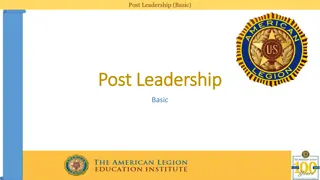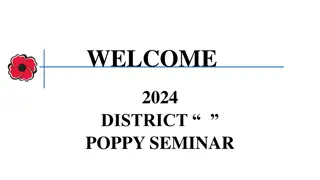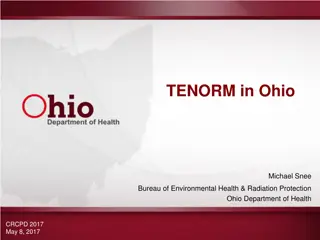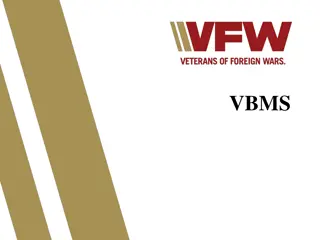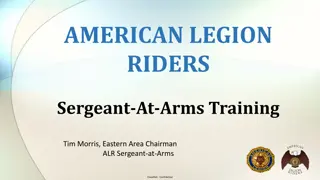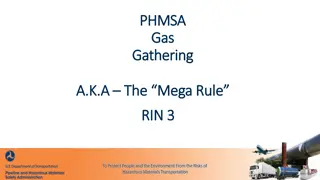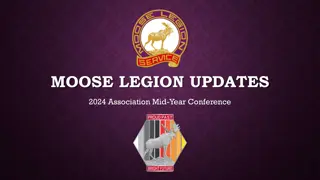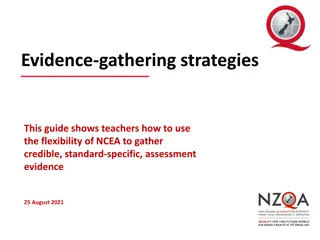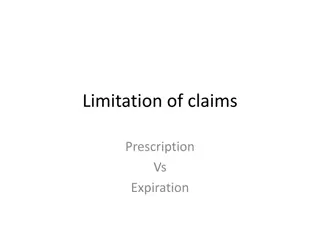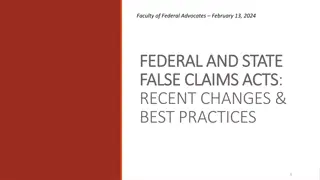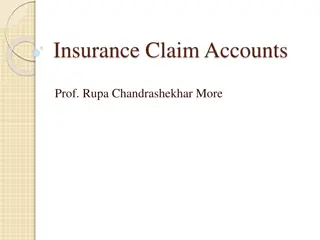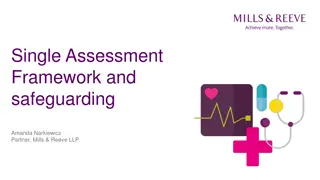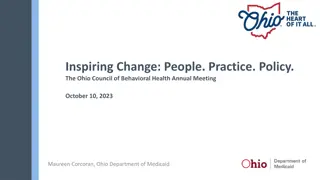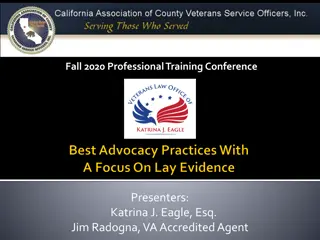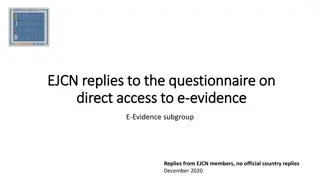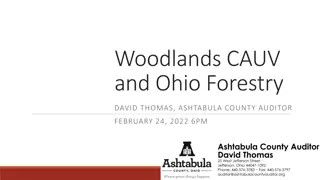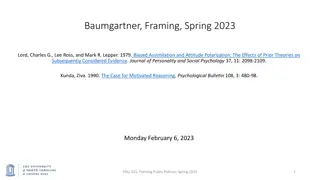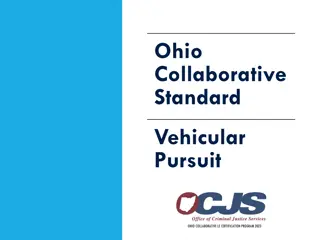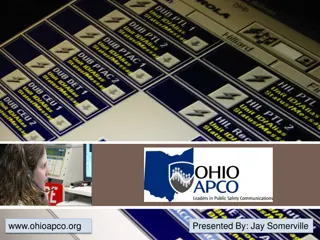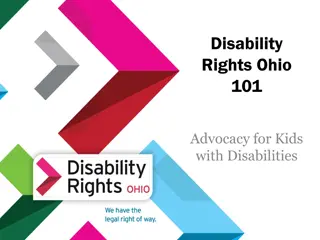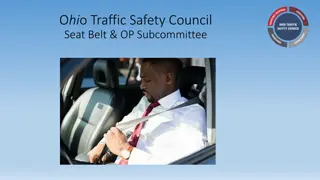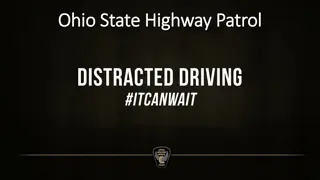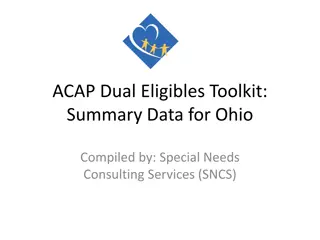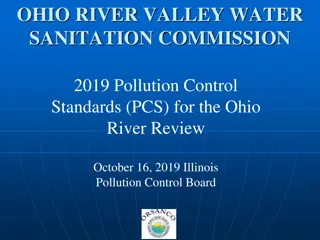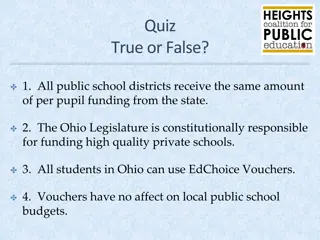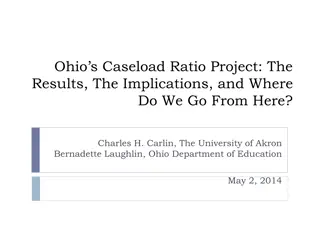Understanding Evidence Gathering for VA Claims with The American Legion Department of Ohio
Evidence is crucial for VA claims, and it can come in various forms such as documents, written statements, photos, and video recordings. The framework for evaluating evidence includes factors like relevance, competence, credibility, and weight. Understanding the types of evidence, forms of relevance, and assessing the competence of sources is essential for building a strong case. The American Legion Department of Ohio provides guidance on evidence gathering to support veterans' claims effectively.
Download Presentation

Please find below an Image/Link to download the presentation.
The content on the website is provided AS IS for your information and personal use only. It may not be sold, licensed, or shared on other websites without obtaining consent from the author. Download presentation by click this link. If you encounter any issues during the download, it is possible that the publisher has removed the file from their server.
E N D
Presentation Transcript
The American Legion Department of Ohio EVIDENCE GATHERING FOR VA CLAIMS Will Brown, Department Service Officer Department Service Officer
WHAT IS EVIDENCE? Evidence is anything that is relevant to an issue in a claim. No particular form is needed to submit evidence. No particular source is required.
Documents Written Statements FORMS OF EVIDENCE Oral testimony Photos Video recordings Legal authorities (laws, regulations are not evidence)
EVIDENCE FRAMEWORK FOUR FACTORS Relevance Competence Credibility Weight
RELEVANCE Is the evidence relevant? Relevant evidence pertains to a fact in dispute. It has any tendency to make that fact more or less likely to be true. VA does not exclude relevant evidence Forshey v. West, 12 Vet. App. 71 (1988) (citing Blacks Law Dictionary).
FORMS OF RELEVANCE DIRECT, CIRCUMSTANTIAL AND NEGATIVE Direct directly shows that something happened in service. Example: Service medical records (SMR) documentation of a wound or injury is direct evidence the veteran was injured in service. Circumstantial supports an inference that something happened. Example: The fact that a veteran took a lower paying job that was less physically demanding is circumstantial evidence that the veteran was suffering a physical disability at the time. Negative disproves an alternative view of the facts. Example: VA used evidence that is was not raining at the time of the accident to suggest that the accident was due to a veteran s intoxication. (VA was trying to argue that because the accident was not due to any natural factors it had to be the veterans' fault.) Forshey v. West, 12 Vet. App. 71 (1988) (citing Blacks Law Dictionary).
COMPETENT Is the source competent to provide evidence? Is it within the knowledge of the source? Compare the specific fact or assertion to the competence of the source. Expertise is required only for matters beyond the competence of a lay person. Competence of Lay Persons Lay veterans are competent to report pain and symptoms observable with the six senses. Note: Balance is a sense! Buddy Statements can report symptoms they observe difficulty hearing, wincing or grimacing with pain, limping, difficulty sleeping, such as snoring. Falzone v. Brown, 8 Vet. App. 398 (1995). Layno v. Brown, 6 Vet. App. 465 (1994).
COMPETENCE ON MEDICAL ISSUES Some veterans (and spouses) have medical training. Lay persons can diagnose simple conditions: Tinnitus, broken arm, flat feet, varicose veins Maybe depression But not cancer or PTSD Lay persons can make some nexus Statements. Buchanan v. Nicholson, 451 F. 3rd1331 (Fed. Cir. 2006).
CITATIONS FOR LAY PERSON DIAGNOSES Lay persons can diagnose: Tinnitus: Charles v. Principi, 16 Vet. App. 370 (2002). Broken arm: Jandreau v. Nicholson, 492 F.3d 1372 (Fed. Cir. 2007). Flat feet: Falzone v. Brown, 8 Vet.App. 398 (1995). Varicose veins: Barr v. Nicholson, 21 Vet.App. 303 (2007). Lay persons can maybe diagnose: Depression: Davidson v. Nicholson, 581 F.3d 1313 (Fed. Cir. 2009). Lay persons cannot diagnose: Cancer: Jandreau v. Nicholson, 492 F.3d 1372 (Fed. Cir. 2007). PTSD: Young v. McDonald, 766 F.3d 1348 (Fed. Cir. 2014
CREDITABILITY Is the source of evidence credible? Credibility is whether the information is accurate and reliable. Not credible does not mean fraud or deceit Human memory is fallible Corroboration of a veteran's symptom history is not required. Lack of corroboration can be considered but cannot be the sole basis for rejecting testimony. Buchanan v. Nicholson, 451 F. 3rd1331 (Fed. Cir. 2006).
CREDITABILITY CONTINUED Factors to establish credibility include: Contemporaneous records of past events. Statements of the Veteran made before a claim was filed. Observations from friends and family. Statements heard by friends and family.
WEIGHT How much weight should this evidence be granted? Weight is the strength of a piece of evidence. Evidence does not need to be sufficient by itself to be considered. VA can make a favorable finding even where no single piece of evidence proves a fact by itself. Our role is to argue which evidence should be given more or less weight.
EVIDENCE FRAMEWORK RECAP For each piece of evidence, consider its: 1. Relevance: does it pertain to a fact in dispute? 2. Competence: is it within the source s knowledge? 3. Credibility: is it accurate and reliable? 4. Weight: how strongly should it be considered?


